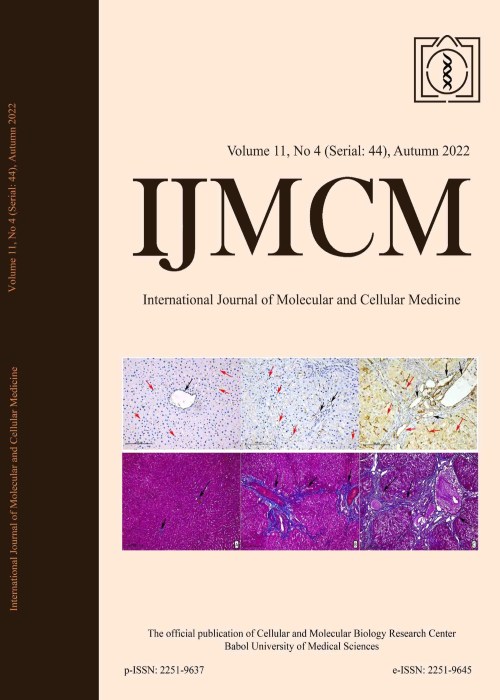Novel Mutations in TACSTD2 Gene in Families with Gelatinous Drop-like Corneal Dystrophy (GDLD)
Author(s):
Article Type:
Research/Original Article (دارای رتبه معتبر)
Abstract:
In the current study, we conducted a mutation screening of tumor-associated calcium signal transducer 2 (TACSTD2) gene in six consanguineous Iranian families with gelatinous drop-like corneal dystrophy (GDLD), in order to find the causative mutations. Detailed eye examination was performed by ophthalmologist to confirm GDLD in patients. To detect the possible mutations, direct Sanger sequencing was performed for the only exon of TACSTD2 gene, and its boundary regions in all patients. In the patients with GDLD, the corneal surface showed lesions with different shapes from mild to severe forms depending on the progress of the disease. The patients showed grayish corneal deposits as a typical mulberry form, corneal dystrophy along with corneal lipid deposition, and vascularization. Targeted Sanger sequencing in TACSTD2 gene revealed the causative mutations in this gene in all studied families. Our study expanded the mutational spectrum of TACSTD2 which along with the related symptoms could help with the diagnosis, and management of the disease.
Keywords:
Gelatinous drop , like , corneal dystrophy , GDLD , TACSTD , Iranian
Language:
English
Published:
International Journal of Molecular and Cellular Medicine, Volume:6 Issue: 24, Autumn 2017
Page:
6
magiran.com/p1794672
دانلود و مطالعه متن این مقاله با یکی از روشهای زیر امکان پذیر است:
اشتراک شخصی
با عضویت و پرداخت آنلاین حق اشتراک یکساله به مبلغ 1,390,000ريال میتوانید 70 عنوان مطلب دانلود کنید!
اشتراک سازمانی
به کتابخانه دانشگاه یا محل کار خود پیشنهاد کنید تا اشتراک سازمانی این پایگاه را برای دسترسی نامحدود همه کاربران به متن مطالب تهیه نمایند!
توجه!
- حق عضویت دریافتی صرف حمایت از نشریات عضو و نگهداری، تکمیل و توسعه مگیران میشود.
- پرداخت حق اشتراک و دانلود مقالات اجازه بازنشر آن در سایر رسانههای چاپی و دیجیتال را به کاربر نمیدهد.
In order to view content subscription is required
Personal subscription
Subscribe magiran.com for 70 € euros via PayPal and download 70 articles during a year.
Organization subscription
Please contact us to subscribe your university or library for unlimited access!


